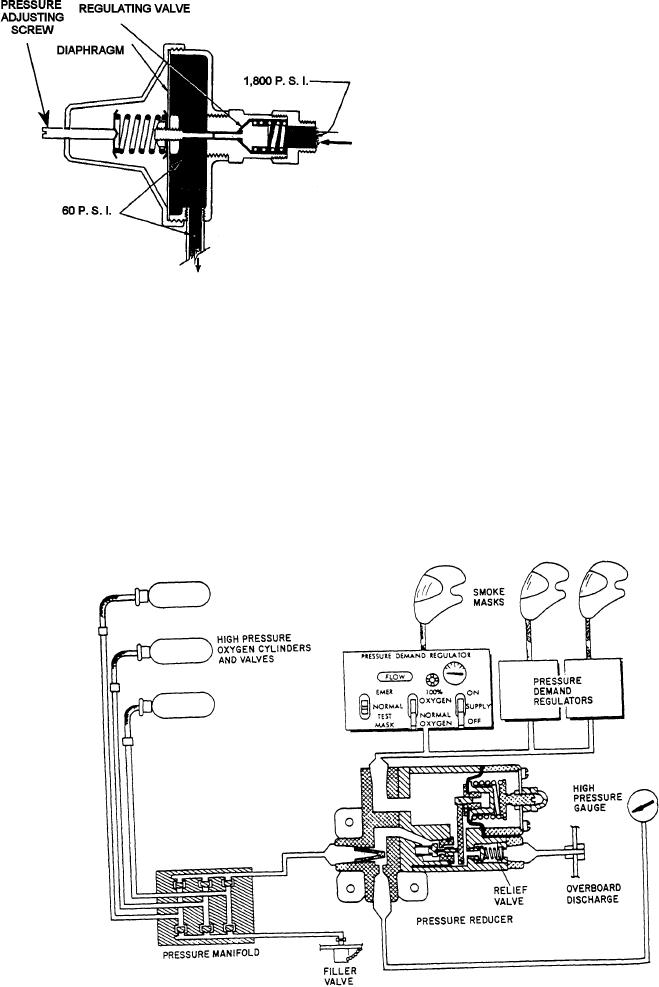
All systems are equipped with at least one gauge that
indicates the amount of oxygen in the cylinders. The
gauge also indicates indirectly how much longer the
oxygen will last.
The volume of any gas compressed in a cylinder is
directly proportional to the pressure. If the pressure is
half, the volume is half, etc. Therefore, if 900 psi of
oxygen remains in a 1,800-psi system, half the oxygen
is left.
A pressure gauge is always mounted at each flight
station, usually on the regulator. These gauges are
calibrated to indicate from 0 to 2,000 psi on
high-pressure systems and 0 to 500 psi on reduced
high-pressure systems.
Figure 7-4.--Pressure-reducing valve.
TYPICAL GASEOUS OXYGEN SYSTEMS
As previously stated, naval aircraft equipped with
generally located so it may be reached by a person
high-pressure oxygen systems are designed for
standing on the ground or wing. The filler valve
approximately 1,800 psi, with working pressures
contains a check valve, which opens during the filling
reduced to 60 to 70 psi by a reducer or regulator.
operation and closes when filling is completed. A dust
Systems equipped with a pressure reducer are referred
cap keeps out dust, dirt, grease, and moisture.
to as reduced high-pressure systems. The reduced
high-pressure gaseous oxygen system shown in figure
Gauges
7-5 is typical of high-pressure cylinders and supplies
three regulators--one each for the pilot, copilot, and
Gauges are used in gaseous oxygen systems to
flight engineer.
indicate the oxygen pressure in pounds per square inch.
Figure 7-5.--Reduced high-pressure oxygen system schematic.
7-7

